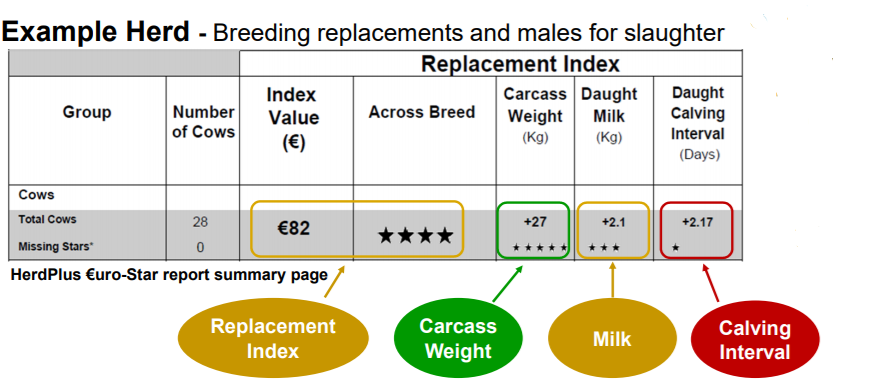There has been a lot of confusion surrounding the €uro-Star Indexes in recent times. Some farmers argue that they have improved overall performance, while others claim they’ve not achieved the desired results.
Speaking at BEEF 2018, the Irish Cattle Breeding Federation’s (ICBF’s) Chris Daly outlined how to use the indexes in three steps.
Firstly, he highlighted that every farm is different and farmers need to ask themselves what they are trying to produce.
“There’s lots of different systems in Ireland. Some farmers are producing weanlings, others are trying to breed replacements and some bring their progeny to beef.
“Each of these systems need slightly different genetics. For example, if a farmer is producing weanlings and the cows are poor for carcass weight, then these calves will not have the weight, shape or carcass when they are being sold through the ring,” he explained.
The second step involves identifying where the herd is weak and where the herd is strong. Chris used a €uro-Star report from a 28-cow herd (herd average and not individual cows) – where the farmer breeds his/her own replacements and brings all males to slaughter – as an example.
Chris also used a traffic light system in terms of the traits that are strong (green), the traits that can be improved slightly (amber) and the traits that are weak (red).
“First of all, the bulls that this farmer should be using are replacement-index bulls because they are looking to breed replacements,” he said.
The herd was 5-star for carcass weight (+27kg); the herd is extremely strong on carcass weight. Therefore, carcass weight was given a green light.
Chris continued: “Now, we have to look at where we can improve. The overall replacement index is €82; it’s above the national average, but it’s at four stars.
“There are some herds in the country at €130, €140 or €150; we can improve a lot on €82. What the replacement index does is that it gives the overall picture of all the genetics that are important for a cow. For example: milk; fertility; weight gain; carcass weight; and maintenance.
“Specifically within those traits, milk is an area that can be improved. We have a plus figure (+2.1) and a plus figure is good for milk, but it could be a lot higher,” he explained.
Although the herd has three stars for milk, there’s scope for improvement. This was awarded the amber colour.
Calving interval had one star; therefore the genetics in this herd are quite poor. On this, Chris said: “With calving interval, we want a negative figure and the more negative it is the better.”
- Maintain carcass weight;
- Improve overall replacement index figure and milk figure;
- Decrease calving interval.
“So when this herd goes out to select a bull, if that farmer goes out to pick a bull that is already high on carcass and poor in fertility, they are not making any progress.
“They need a bull that will increase the overall replacement index, increase milk and dramatically decrease calving interval.
“A lot of people think that because we are increasing the replacement index, the carcass side of things is suffering; but this is not the case.
“The replacement index is trying to bring us forward in a balanced way – maintaining carcass and improving milk and fertility. This way, we are breeding a balanced suckler cow,” he concluded.



